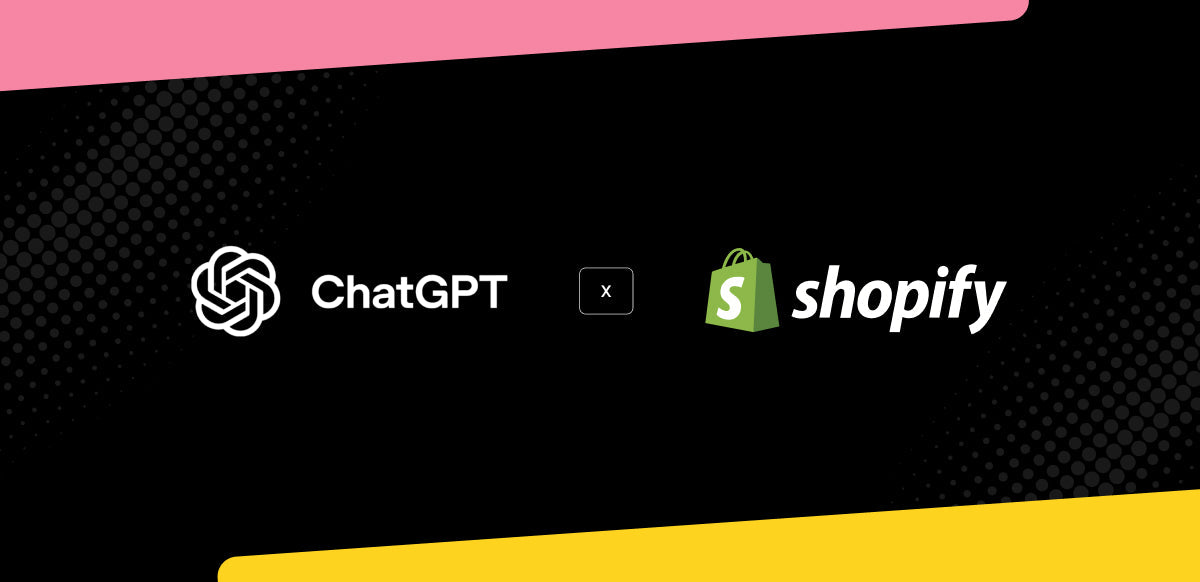Blog / Why the ChatGPT + Shopify integration could change product discovery forever
Why the ChatGPT + Shopify integration could change product discovery forever

OpenAI recently released code suggesting it’s working on a native Shopify checkout feature within ChatGPT. No affiliate links. No redirects. Just: discover, decide, buy - all inside the chat.
For anyone working in SEO, product architecture, or performance marketing, this is potentially enormous news.
We’re not just talking about a new shopping feature here. We’re potentially looking at a new way the internet facilitates commerce - where the line between discovery and conversion becomes almost invisible.
This article breaks down what that means, who’s best placed to benefit, and what brands should be doing now to stay ahead.
Your site is where optimisation will happen
Most marketing channels ask you to optimise inside someone else’s platform – Google, Meta, TikTok. SEO is different. It relies on how your own site is structured.
That’s why this potential Shopify + ChatGPT integration is so important. If users begin discovering products through conversation - not just search or scroll - your site’s product data and taxonomy could become the engine behind that entire journey.
It’s a shift from optimising in platform to optimising on site.
Discovery through conversation, not interruption
Traditionally, product discovery is driven by interruption. Ads in your feed. Banners on a blog. A shopping result when you type something into Google.
But ChatGPT flips that on its head.
Imagine someone types:
“I’m looking for a birthday present under £30 for my brother, who loves cycling and hates clutter.”
Instead of a list of ads or sponsored results, they get a curated answer - powered by structured product data, pulled from Shopify stores.
It’s a more intent-rich, user-led conversation. And it introduces a new kind of shopping experience: one that’s natural, personalised, and frictionless.
The limits of Meta-style discovery
Meta has been the go-to for e-commerce discovery for years. But it works best when the journey is short and sharp – problem, solution, buy.
For example:
• A skincare brand solving dry skin
• A sleep supplement with strong before-and-after results
• A viral posture gadget with a clear use case
But what about:
• A DTC brand selling ergonomic kids’ furniture with dozens of variations?
• A gift brand where product selection depends on mood, recipient, price, and occasion?
• A sock brand like Bare Kind, where products are organised by animal and donation cause?
These aren’t simple, linear journeys. They need context. They need education. And most of all, they need structure.
Structured data is the foundation
This is where things get interesting.
If discovery is going to happen inside ChatGPT, your product data needs to do the heavy lifting. That means:
• Clear tagging
• Consistent product attributes
• Thoughtful use of metafields
• Schema markup that reflects use cases
• Collection structures that reflect how people actually shop
Structured data isn’t just about SEO anymore - it becomes the foundation for discovery itself.
And this is where Shopify shines. Its standardised product model and flexible architecture make it much easier to maintain clean, machine-readable data than many custom or legacy platforms.
The real opportunity: product pages as prompts
The way we think about PDPs (product detail pages) might be due for an overhaul.
Instead of seeing them as landing pages built around a couple of keywords, we might need to start thinking of them as prompts for AI.
That could mean:
• Using metafields to define use cases, attributes, and gifting suitability
• Building collections that map to natural language queries
• Creating content that helps AI understand not just what the product is - but why someone would want it
For example, a sustainable fashion store might tag products by:
• Fabric type
• Country of manufacture
• Environmental impact
• Who it’s a good gift for
That level of detail allows AI to return meaningful, specific results when someone types a nuanced request.
Will this trigger a wave of Shopify migrations?
We think so. If Shopify becomes the default infrastructure for conversational commerce, brands on custom platforms will need to catch up fast.
And it’s not just about having clean product data. It’s about being able to deploy updates quickly across thousands of SKUs, roll out new metafield strategies, and restructure collections to reflect intent.
That kind of agility is built into Shopify’s DNA. Which is why many brands may see this as the nudge they needed to finally migrate.
What should brands be doing now?
If even part of this vision becomes reality - and the signals are strong - the time to act is now.
At Blink, we approach this by starting with the foundation: your product data system.
The first step is always the same – building a tag and metafield system. This isn’t just a list of attributes. It’s the blueprint for your taxonomy. It defines how your products are organised, how they’re understood by machines, and how they’re surfaced in discovery.
Whether you’re using tags, metafields, or both – this library powers everything:
• Creating or refining collections
• Structuring PDPs with clear, consistent attributes
• Enabling advanced schema
• Enriching shopping feeds
• Supporting future conversational interfaces like ChatGPT
Once that’s in place, the execution becomes far more scalable, and far more effective.
This is the kind of work we specialise in at Blink. For Shopify brands with large product catalogues, we do this day in, day out - building systems that turn complex data into structured, scalable growth.
So if you’re wondering how your product data stacks up – or how to prepare for what’s next – we’d love to help.






